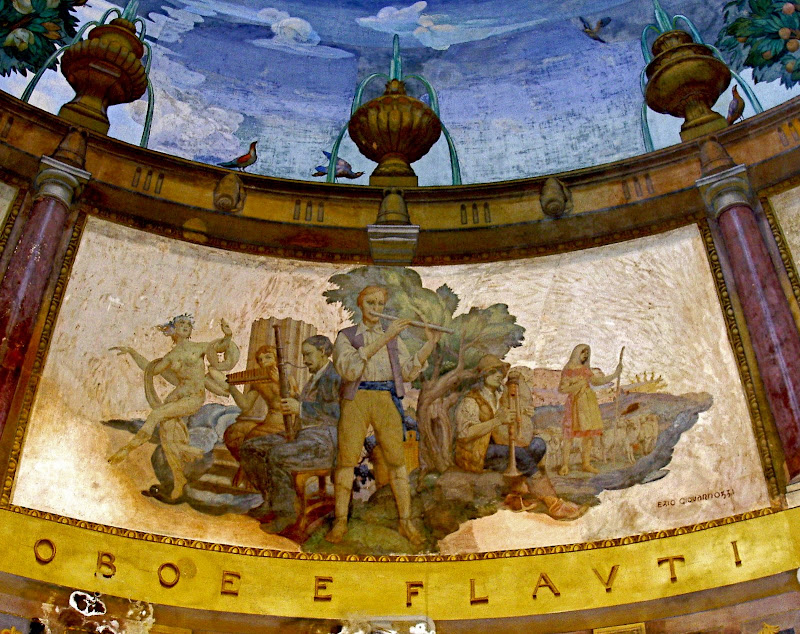
Under the Doors logo I present today some entrances to historical important areas and buildings.
A
gate is a point of entry to a space enclosed by
walls, or an opening in a
fence. Other terms for gate include
yett and
port.
A
door is a moveable barrier used to cover an opening.
(Definitions and sonme text according to
Wikipedia)
Some of these barriers are not covered anymore due to time running and the need for hindering somebody to pass has been removed due to other reasons.

My first entrance is from the ancient city
Matera, a town and a province in the region of
Basilicata, in southern
Italy. It is the capital of the
province of Matera. The city was allegedly founded by the
Romans in the 3rd century BC, with the name of
Metheola. Matera is the only place in the world where people can boast to be still living in the same houses of their ancestors of 9,000 years ago. The entrance above is to the very old chapel at the top of the ancient city located close to

a small canyon, which has been eroded in the course of years by a small stream, the Gravina.

My next entrance is to the first Irish Public House or ‘pub” ever recorded in 1198, located in Dublin, Ireland:
The Brazen Head.The United Irishmen planned the 1798 Rebellion, James Joyce penned Ulysses and Van Morrison wrote Brown Eyed Girl all within the historical walls of The Brazen Head.

Another writer has a special relation to the entrance of
Cafe Franz Kafka in Prague.
Franz Kafka was one of the major
fiction writers of the 20th century. He was born to a
middle-class German-speaking
Jewish family in
Prague,
Austria-Hungary, presently the
Czech Republic.

The final contribution under the Doors logo this Thursday, is the famous
Brandenburger Tor in Berlin, Germany. The former
city gate and one of the main symbols of the capital of Germany.
The Gate is located west of the city center at the intersection of
Unter den Linden and Ebertstrasse, immediately west of the
Pariser PlatzBrandenburg Gate consists of twelve
Doric columns, six to each side, forming five passageways. Citizens originally were allowed to use only the outermost two. Atop the gate is the
Quadriga, a chariot drawn by four horses driven by
Victoria, the Roman goddess of victory.
 British artist Marc Quinn has designed and created his naked, yoga-contorted sculpture of Kate Moss, which presently is to be seen in "Folketeaterpassasjen" outside the old Opera in Oslo, and called it Myth Sphinx - Kate Moss-
British artist Marc Quinn has designed and created his naked, yoga-contorted sculpture of Kate Moss, which presently is to be seen in "Folketeaterpassasjen" outside the old Opera in Oslo, and called it Myth Sphinx - Kate Moss-

 A lifesize gold statue of Kate Moss as a "modern-day Aphrodite" with her legs tucked behind her head has also been unveiled at the British Museum. Siren is made entirely of 18 carat gold and was displayed in the museum's Nereid Gallery among statues of Greek goddesses including Aphrodite.
A lifesize gold statue of Kate Moss as a "modern-day Aphrodite" with her legs tucked behind her head has also been unveiled at the British Museum. Siren is made entirely of 18 carat gold and was displayed in the museum's Nereid Gallery among statues of Greek goddesses including Aphrodite. It is the largest gold statue made by man since ancient Egyptian times, weighing 50kg, around the same as its subject.
It is the largest gold statue made by man since ancient Egyptian times, weighing 50kg, around the same as its subject.
















































